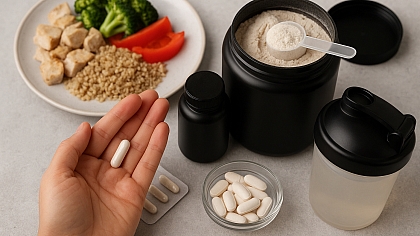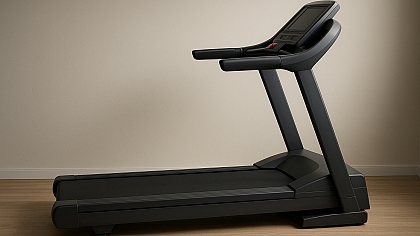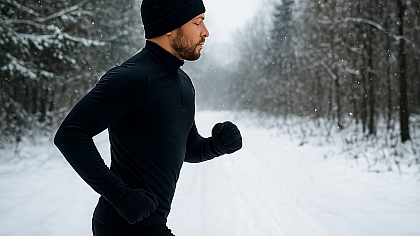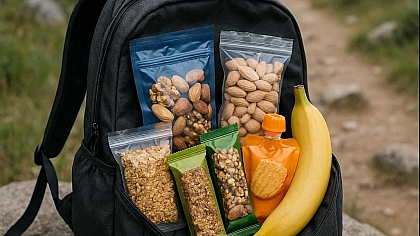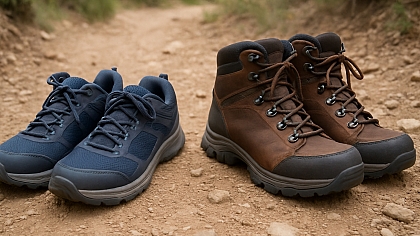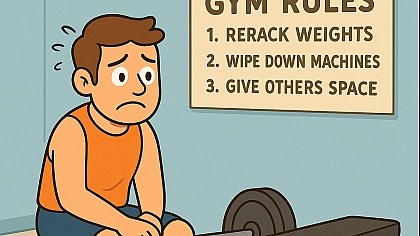
Calisthenics vs. Weightlifting: Which Builds More Strength?
The age-old debate: bodyweight training vs. barbells. Both build strength, but they do it differently. Whether you want raw power, functional fitness, or explosive athleticism, your choice matters.
Here’s a science-backed breakdown of which method delivers more strength—and for whom.
Key Differences at a Glance
| Factor | Calisthenics | Weightlifting |
|---|---|---|
| Progressive Overload | Limited by bodyweight (until advanced) | Easily adjustable (add plates) |
| Strength Type | Relative strength (strength-to-weight ratio) | Absolute strength (max force output) |
| Muscle Activation | Compound movements, stabiliser focus | Isolated or compound, targeted loading |
| Skill Requirement | High (technique matters more) | Lower (easier to scale) |
| Equipment Needed | Minimal (bars, rings) | Gym access (barbells, racks) |
| Functional Carryover | Excellent for mobility/body control | Better for max power/size |
Where Calisthenics Wins
1. Relative Strength & Body Control
- Bodyweight mastery (planche, front lever) requires insane strength-to-weight ratios.
- Real-world carryover: Carrying groceries, climbing, or sports agility improves.
Study: Gymnasts outperform weightlifters in pull-up strength tests despite lighter body weights (Journal of Strength and Conditioning Research).
2. Core & Stabiliser Strength
- Every movement integrates your core (even push-ups!).
- Example: A strict muscle-up demands more stability than a lat pulldown.
3. Joint Longevity
- Lower impact on spine/knees than heavy squats/deadlifts.
- Best for: Athletes needing injury resilience (martial artists, climbers).
Where Weightlifting Wins
1. Absolute Strength Gains
- Progressive overload is precise (add 2.5kg each session).
- Heavy compounds (squat, bench, deadlift) build brute force fastest.
Study: Powerlifters produce 30% more peak force than calisthenics athletes in barbell tests.
2. Hypertrophy (Muscle Size)
- Easier to isolate muscles (barbell curls vs. chin-ups).
- Heavy eccentric loading (slow negatives) grows muscle faster.
3. Sport-Specific Strength
- Football, strongman, rugby require max force output (deadlifts > push-ups).
The Strength Verdict
✅ Calisthenics builds:
- Relative strength (body control, endurance)
- Functional mobility (carryover to real-life movement)
- Lean, athletic physiques
✅ Weightlifting builds:
- Absolute strength (1-rep max lifts)
- Maximum muscle size (bodybuilding-style growth)
- Sport-specific power (explosiveness)
Surprising Fact: Elite athletes often combine both—gymnasts lift weights, and powerlifters do bodyweight drills.
How to Combine Them for Max Strength
Hybrid Program Example
| Day | Focus | Sample Workout |
|---|---|---|
| 1 | Weightlifting | Back Squat 5x5, Bench Press 4x6 |
| 2 | Calisthenics | Pull-ups 4x8, Pistol Squats 3x10 |
| 3 | Explosive | Clean & Jerk 5x3, Plyo Push-ups 4x5 |
Pro Tip: Use weightlifting for lower body strength, calisthenics for upper body control.

FAQs
Q: Can you get "big" with just calisthenics?
A: Yes, but slower. Advanced moves (weighted pull-ups, dips) are key.
Q: Which is better for fat loss?
A: Both work—weightlifting burns more calories post-workout; calisthenics improves metabolic efficiency.
Q: Does calisthenics limit leg strength?
A: Without weights, yes. Add pistol squats, sprints, or weighted vest jumps.
Q: Which is safer for beginners?
A: Calisthenics (lower injury risk), but proper form is critical for both.
The Neurological Strength Divide: How Each Method Trains Your Nervous System
Calisthenics and weightlifting develop fundamentally different neural adaptations:
Calisthenics:
- Enhances intermuscular coordination (multiple muscles firing in sync)
- Improves proprioception (body awareness in space)
- Trains eccentric control (slow negatives on muscle-ups)
Weightlifting:
- Boosts intramuscular recruitment (max motor unit activation)
- Develops rate coding (how fast neurons fire)
- Strengthens tendon stiffness for explosive power
Practical Impact: A 2024 study found calisthenics athletes outperformed weightlifters in balance tests, while lifters had 23% faster reaction times to sudden loads.
The Leverage Advantage: Why Bodyweight Gets Harder at Advanced Levels
Calisthenics progression follows a non-linear difficulty curve:
- Beginner: Push-ups → 10 reps
- Intermediate: Archer push-ups → 5 reps
- Advanced: Planche push-ups → 1 rep
Physics Behind It: Moving your centre of mass further from pivot points (hands/feet) increases torque exponentially. This explains why:
✔ A 180lb athlete doing planche push-ups faces 4x their bodyweight in leverage resistance
✔ The same athlete bench pressing 315lbs handles just 1.75x bodyweight
Training Hack: Use weighted calisthenics (dip belts) to bridge the gap between intermediate and advanced moves.
Hormonal Responses: Surprising Differences in Anabolic Signalling
Blood marker studies reveal:
After Weightlifting:
- Higher IGF-1 spikes (important for muscle growth)
- Greater mTOR activation (protein synthesis pathway)
- Acute testosterone increases (especially after squats/deadlifts)
After Calisthenics:
- Sustained growth hormone release (up to 6 hours post-workout)
- Improved insulin sensitivity (better nutrient partitioning)
- Lower cortisol response (reduced stress hormone impact)
Best Application:
- Hypertrophy focus? Prioritise weights early in the workout
- Fat loss/endurance? Finish with high-rep calisthenics
The Equipment Paradox: Minimalist vs. Gear-Dependent Gains
Calisthenics Gear That Changes Everything:
- Gymnastic rings - Instantly make push-ups/pull-ups 300% harder
- Weighted vests - Allow progressive overload beyond bodyweight
- Parallettes - Enables advanced planche/L-sit training
Weightlifting Gear That Matters:
- Wrist wraps - Allow heavier pressing without joint pain
- Lifting shoes - Improves squat depth/stability
- Fractional plates - Enables microloading for strict progressions
Cost Analysis: A full calisthenics setup (~$200) costs less than one year of gym membership, but weightlifting provides more measurable progression.
Injury Risk Profiles: Where Each Method Shines (and Falters)
Calisthenics Risks:
- Wrist/shoulder overuse from constant bodyweight loading
- Biceps tendon strain during muscle-up transitions
- Lower back rounding in advanced compression moves
Weightlifting Risks:
- Disc herniation from improper spinal loading
- Rotator cuff tears during heavy bench presses
- Knee valgus collapse in maximal squats
Prevention Strategies:
- For calisthenics: Wrist mobility drills + banded face pulls
- For weightlifting: Tempo squats (3-0-3) + deadlift eccentrics
The Ageing Athlete's Dilemma: Which Scales Better Long-Term?
After 40:
- Calisthenics benefits: Maintains mobility, reduces osteoporosis risk
- Weightlifting benefits: Preserves fast-twitch fibres, prevents sarcopenia
Adaptations Needed:
- Calisthenics: Switch to assisted single-leg squats vs. pistols
- Weightlifting: Focus on trap bar deadlifts vs. conventional
Study: Masters athletes combining both methods retained 92% of strength vs. peers who specialised (Journal of Aging and Physical Activity).
The Mental Toughness Factor: Psychological Demands Compared
Calisthenics Challenges:
- Skill frustration (failing at handstand push-ups for months)
- Plateau busting requires creativity (lever progressions)
Weightlifting Challenges:
- Heavyweight intimidation (mental barrier to max attempts)
- Repetitive monotony (same big lifts weekly)
Solution: Rotate modalities every 8-12 weeks to prevent burnout.
Your Next Step: The 90-Day Strength Experiment
Phase 1 (Month 1):
- Weightlifting focus: 5x5 squats/bench/deadlift
- Calisthenics finisher: 3 sets max pull-ups
Phase 2 (Month 2):
- Calisthenics focus: 3x8 weighted dips/pull-ups
- Weightlifting finisher: EMOM deadlifts
Phase 3 (Month 3):
- Hybrid test day: Max reps bodyweight moves + 1RM lifts
(This approach leverages synergistic strength gains while minimizing adaptation plateaus.)
The strongest athletes don't choose—they steal from both methods. Your ideal mix depends on whether you want to move your body or move external objects with maximum efficiency.
Challenge: For your next workout, replace one weightlift with its callisthenics counterpart (e.g., overhead press → handstand push-up progression). Notice the new strength demands.
Choose based on your goals:
- Bodyweight control? → Calisthenics
- Max strength/size? → Weightlifting
- Best of both? → Hybrid training
Try This: For 8 weeks, focus on weighted callisthenics (add a belt with plates) and heavy compounds—watch your strength skyrocket.


